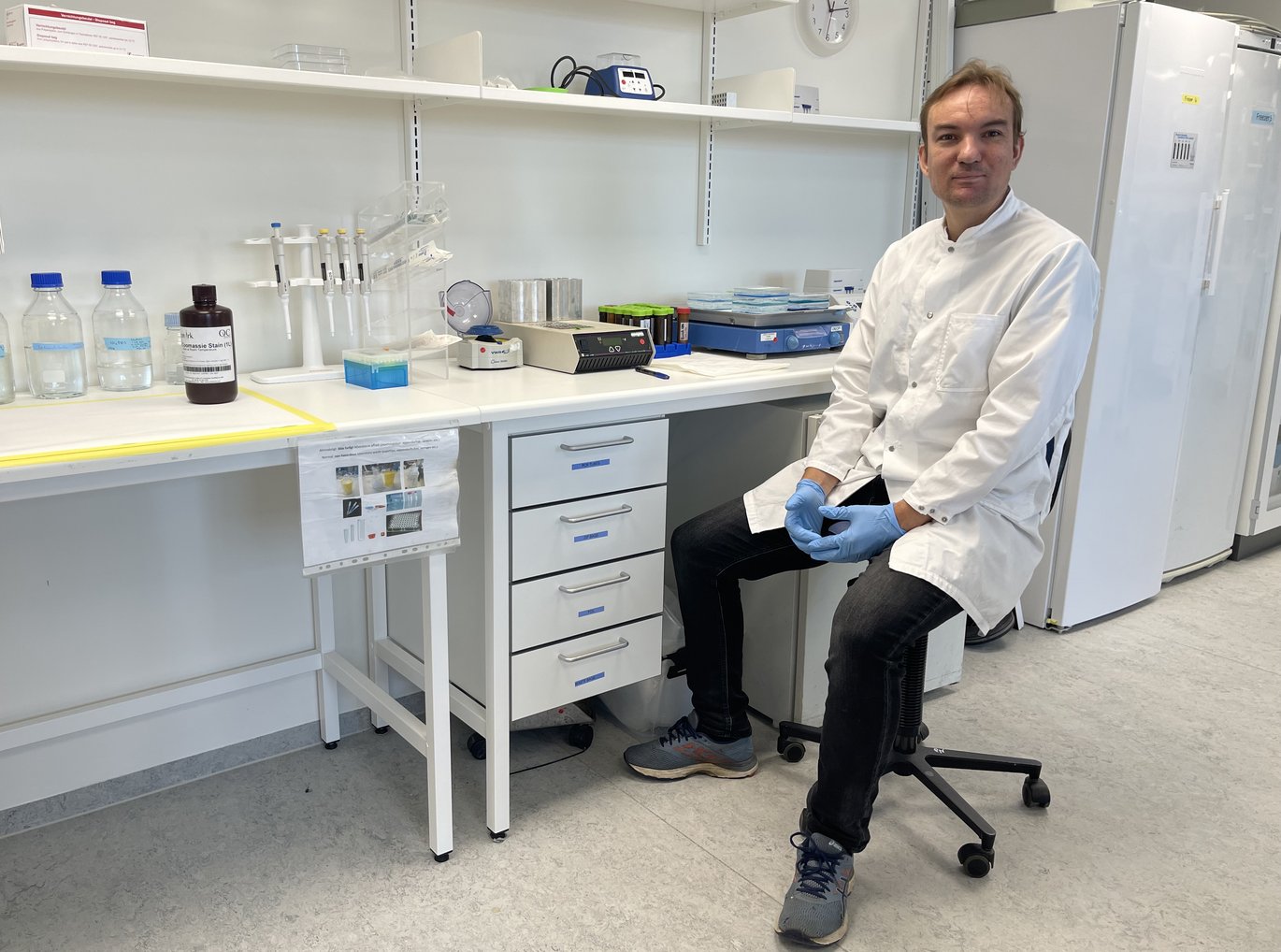University and industry work together to optimise insulin's effect
Good news for the many people who suffer from diabetes, as researchers from Novo Nordisk A/S and the Department of Molecular Biology and Genetics at Aarhus University have taken some important steps together to understand and thus improve the effect of insulin in the body.

During his PhD studies, Jeppe Achton Nielsen from Professor Poul Nissen's laboratory at the Department of Molecular Biology and Genetics at Aarhus University and with senior researcher Thomas Boesen as co-supervisor, has worked together with Gerd Schluckebier and other researchers from Novo Nordisk A/S to find a better way for the body to utilise insulin.
Jeppe Achton Nielsen states:
"When we started the project, we knew very well that insulin lowers blood sugar, and we've known that for almost 100 years. What we didn't understand was how insulin was recognised by the body's cells and how insulin creates the signal that tells the cells to take up sugar. By solving the structure of the insulin receptor with insulin bound, we have found out how insulin is bound and recognised”.
It turns out that not only the insulin receptor – but also insulin itself – changes its three-dimensional structure when it binds, and that the insulin receptor simultaneously behaves as a kind of switch that turns on the insulin signal inside the cell. In addition, Jeppe and colleagues have investigated how different insulins and insulin-like substances affect the insulin receptor.
Jeppe Acton Nielsen, who has worked at both Aarhus University and Novo Nordisk throughout his PhD studies, says:
"For me, as a PhD student with a Master's thesis from Aarhus University, it was fantastic to work together with researchers and laboratory technicians at Novo Nordisk. It was truly a privilege to exchange ideas with researchers who, with their many years of experience in insulin and the insulin receptor field, helped me develop my own methods based on their experiences.”
And Jeppe continues: “I was fortunate that my project was diabetes as it is the lifeblood of research at Novo Nordisk. I had fantastic support for my project from all departments, where everbody showed a genuine interest in my project. This also applied to department and area managers who supported many cross-departmental collaborations. This has given me a lot of experience in interdisciplinary collaboration and project management – skills that are essential for my future work as a researcher. Finally, I got enormous help from skilled laboratory technicians at Novo Nordisk. They shared their extensive knowledge of practical experience and helped me get started with techniques and methods that I had not tried before.”
About the practical circumstances of working in two different places and in different environments, he continues:
"Of course, there are some low-practical challenges as an industrial PhD student, since as an associate at both Novo Nordisk's research department in Måløv in Zealand (Sjælland) and the Department of Molecular Biology and Genetics at Aarhus University, I had a lot of travel activity back and forth. It was necessary to have a room both in Aarhus and on Zealand in order to be flexible in relation to the ongoing work tasks and where I could best carry out my experiments.”
The results of Jeppe's research on insulin's binding to the insulin receptor have recently been published in the international Journal of Molecular Biology, and they have shown a surprising effect with asymmetric binding of insulin to the receptor, which is also linked to a tight assembly of the receptor's anchoring in the cell membrane and thus the signaling into the cell (see figure below).
Figure: Structures of insulin receptor dimer with 0, 1, 2, 3 and 4 insulin molecules bound, respectively (A to E, respectively). The structures are seen from the side along the cell membrane (top row) and from the membrane upwards (bottom row). One notices that the distance between the two "legs" of the receptor becomes shorter with 1,2, or 3 insulin bound, respectively (19-21 Å compared to 111 and 40 Å with 0 or 4 insulin bound, 1 Å= 0.1 nanometer, respectively). Framed in a red square are the new structures from Jeppe's work, which were obtained using the cryo-electron microscopy facilities at Aarhus University (EMBION.au.dk) and with insulin receptor purified at Novo Nordisk in Måløv.
As a result of Jeppe's PhD work, there is also more on the way, which is continued by, among others, AIAS Ukraine Fellow Mariana Kutznietsova in Poul Nissen's laboratory. Jeppe explains:
"One of the insulin-like substances we have studied has been shown to have a rather unique effect on the insulin receptor. The hope is that the substance can be further developed in the future and potentially become a new treatment for diabetics.”
Jeppe Achton Nielsen defended his PhD thesis "Structural Studies of the human insulin receptor isoform A, hIR-A, using cryo-electron microscopy" at Aarhus University on 27 September 2022.
Jeppes Achton Nielsen has fallen for working together with industry, as he starts in a research position as a postdoctoral fellow at the pharmaceutical company Sanofi in France, starting 14 November 2022.
For further information, please contact
Jeppe Achton Nielsen, PhD - jan@mbg.au.dk
Professor Poul Nissen
Department of Molecular Biology and Genetics
Aarhus University, Denmark
pn@mbg.au.dk - Mobil: + 45 2899 2295
